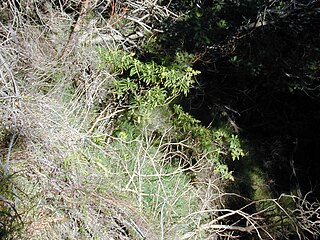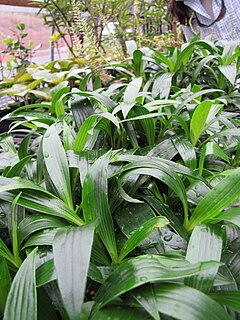
Phyllostegia is a genus of flowering plant in the mint family, Lamiaceae, first described in 1840. It is native to certain island in the Pacific.
- Phyllostegia ambigua(A.Gray) Hillebr - Hawaii Big Island, Maui
- Phyllostegia bracteataSherff - Maui
- Phyllostegia brevidensA.Gray - Hawaii Big Island, Maui
- Phyllostegia electraC.N.Forbes - Kauai
- Phyllostegia floribundaBenth - Hawaii Big Island
- Phyllostegia glabra (Gaudich.) Benth. - Hawaiian Islands
- Phyllostegia grandiflora(Gaudich.) Benth - Oahu
- Phyllostegia haliakalaeWawra - Maui, Molokai
- Phyllostegia helleriSherff - Wai'alae Valley of Kauai
- †Phyllostegia hillebrandiiH.Mann ex Hillebr - Maui but extinct
- Phyllostegia hirsutaBenth. - Oahu
- Phyllostegia hispidaHillebr. - Molokai (Molokaʻi)
- Phyllostegia kaalaensisH.St.John - Oahu (Oʻahu)
- Phyllostegia kahiliensisH.St.John - Kauai
- Phyllostegia knudseniiHillebr. - Kauai
- Phyllostegia macrophylla(Gaudich.) Benth. - Hawaii Big Island, Maui
- Phyllostegia manniiSherff - Molokai, Maui
- Phyllostegia micranthaH.St.John - Oahu
- Phyllostegia mollisBenth. - Hawaiian Islands
- Phyllostegia parvifloraBenth. - Hawaiian Islands
- Phyllostegia pilosaH.St.John - Hawaiian Islands
- Phyllostegia racemosaBenth. - Hawaiian Islands
- Phyllostegia renovansW.L.Wagner - Kauai
- †Phyllostegia rockiiSherff - Maui but extinct
- Phyllostegia stachyoidesA.Gray - Hawaiian Islands
- †Phyllostegia tahitensisNadeaud - Tahiti but extinct
- Phyllostegia tongaensisH.St.John - Tonga
- †Phyllostegia variabilisBitter - Midway Islands but extinct
- Phyllostegia velutina(Sherff) H.St.John - Hawaii Big Island
- Phyllostegia vestitaBenth. - Hawaii Big Island
- Phyllostegia waimeaeWawra - Kauai
- Phyllostegia warshaueriH.St.John - Hawaii Big Island
- Phyllostegia wawranaSherff - Kauai
- Phyllostegia × yamaguchiiHosaka & O.Deg. - Oahu (P. glabra × P. hirsuta)
Melicope pallida is a species of tree in the Rutaceae family. It is endemic to the Hawaiian Islands. It is threatened by habitat loss. It is a federally listed endangered species of the United States. Like other Hawaiian Melicope, this species is known as alani.
Myrsine knudsenii, the Kokee colicwood, is a species of tree in the primrose family. It is endemic to the island of Kauai in Hawaii. It is threatened by habitat loss.

Cyperus trachysanthos is a rare species of sedge known by the common names pu`uka`a and sticky flatsedge. It is endemic to Hawaii, where it is known from Kauai and Oahu. It was known from Niihau, Molokai and Lanai, but it has been extirpated from these islands. It is a federally listed endangered species of the United States.

Delissea rhytidosperma, is known by the common names Kauai delissea, Kauai leechleaf delissea, and leechleaf delissea. It is a rare species of flowering plant in the bellflower family, that is endemic to Hawaii where it is known only from the island of Kauai. It is extinct in the wild.

Dubautia plantaginea is a rare species of flowering plant in the aster family known by the common name plantainleaf dubautia. It is endemic to Hawaii where it is the only member of the silversword alliance that is found on all six of the largest islands. Two of the three subspecies are rare and endangered. Like other Dubautia this plant is called na`ena`e.
Exocarpos luteolus is a rare species of flowering plant in the sandalwood family known by the common names leafy ballart or heau. It is endemic to Hawaii, where it is known only from the island of Kauai. There are eight populations remaining, for a total global population of only 39 individuals. The plant was federally listed as an endangered species of the United States in 1994.
Isodendrion longifolium is a rare species of flowering plant in the violet family known by the common names longleaf isodendrion and aupaka. It is endemic to Hawaii, where it is known from fewer than 1000 individuals on the islands of Kauai and Oahu. It is a federally listed threatened species of the United States.
Lysimachia scopulensis is a rare species of flowering plant in the family Primulaceae known by the common name shiny-leaf yellow loosestrife. It is endemic to Hawaii, where there are two small populations on the island of Kauai. It was federally listed as an endangered species of the United States in 2010.

Cyperus pennatiformis is a rare species of sedge known by the common name coastal flatsedge. It is endemic to Hawaii, where it grows on the islands of Maui, Kauai, and Laysan. It is a federally listed endangered species of the United States.
Phyllostegia hirsuta is a species of flowering plant in the mint family known by the common names Molokai phyllostegia and hairy phyllostegia. It is endemic to Hawaii, where it is known only from the island of Oahu. It is a federally listed endangered species of the United States.

Phyllostegia parviflora is a rare species of flowering plant in the mint family known by the common name smallflower phyllostegia. It is endemic to Hawaii, where it is known from Maui, Oahu, and the island of Hawaii. It is a federally listed endangered species of the United States.
Phyllostegia renovans is a rare species of flowering plant in the mint family known by the common name red-leaf phyllostegia. It is endemic to Hawaii, where it is known only from the island of Kauai. It was federally listed as an endangered species of the United States in 2010.
Phyllostegia waimeae is a rare species of flowering plant in the mint family known by the common name Kauai phyllostegia. It is endemic to Hawaii, where it is limited to the island of Kauai. It is a federally listed endangered species of the United States.
Phyllostegia wawrana is a rare species of flowering plant in the mint family known by the common name fuzzystem phyllostegia. It is endemic to Hawaii, where it is limited to the island of Kauai. It is a federally listed endangered species of the United States.

Plantago princeps is a rare species of flowering plant in the plantain family known by the common name ale. It is endemic to Hawaii, where it is known from the islands of Hawaii, Kauai, Oahu, Molokai, and Maui. Like other Hawaiian Plantago, it is known as kuahiwi laukahi, or laukahi kuahiwi. It is a federally listed endangered species of the United States.
Schiedea apokremnos is a rare species of flowering plant in the pink family known by the common names Kauai schiedea, Na Pali Coast schiedea, and ma`oli`oli. It is endemic to Hawaii, where it is known only from the island of Kauai. It is threatened by the degradation of its habitat. It is a federally listed endangered species of the United States.
Schiedea helleri is a rare species of flowering plant in the pink family known by the common names Heller's schiedea and Kaholuamanu schiedea. It is endemic to Hawaii, where it is known only from the island of Kauai. It is threatened by the degradation of its habitat. It was federally listed as an endangered species of the United States in 1996.
Schiedea kauaiensis is a rare species of flowering plant in the pink family known by the common name Kauai schiedea. It is endemic to Hawaii, where it is known only from the island of Kauai. It is threatened by the degradation and destruction of its habitat. It was federally listed as an endangered species of the United States in 1996.
Stenogyne kealiae is a rare species of flowering plant in the mint family known by the common name Keal's stenogyne. It is endemic to Hawaii, where it is known only from the island of Kauai. It was federally listed as an endangered species of the United States in 2010.










